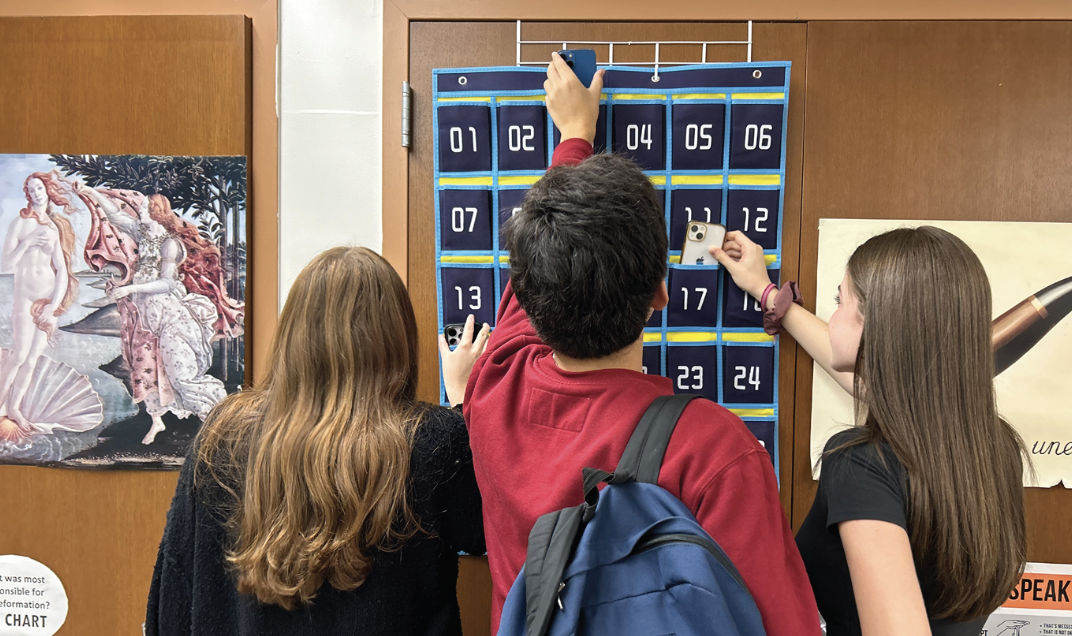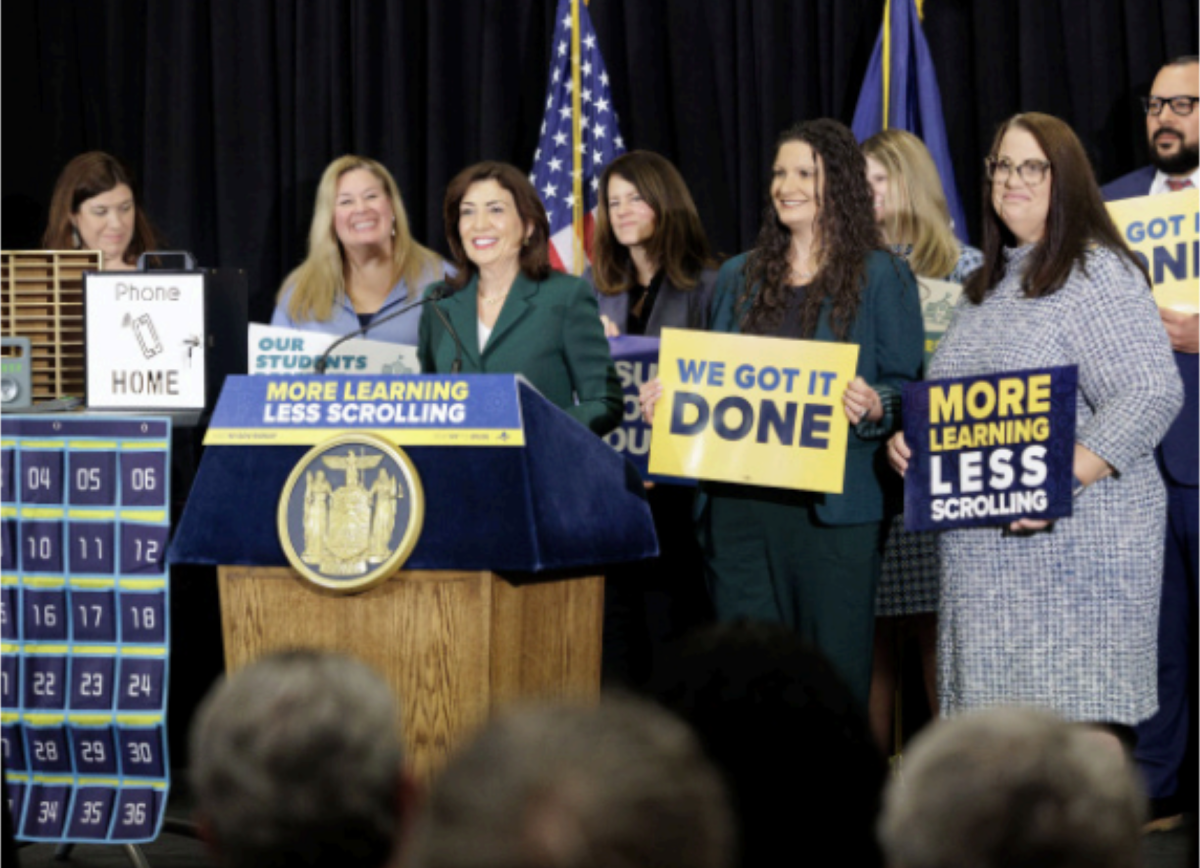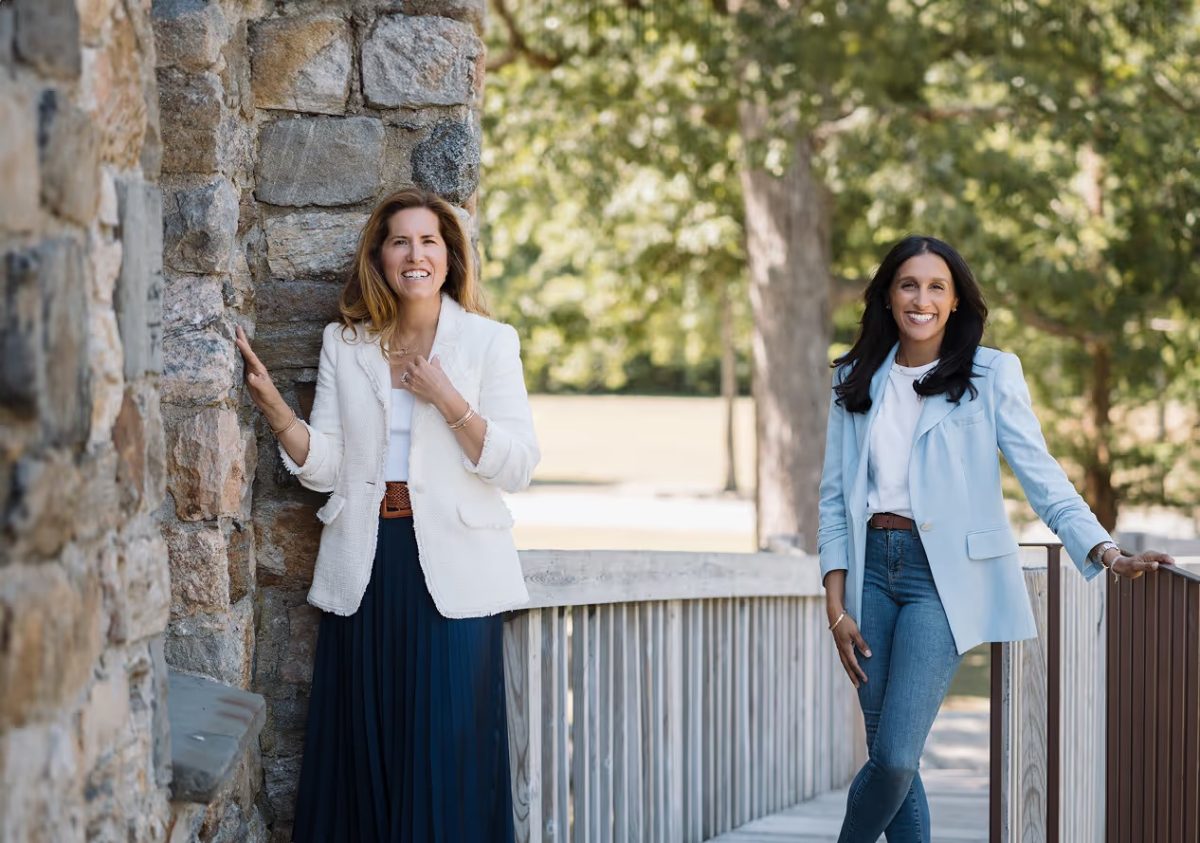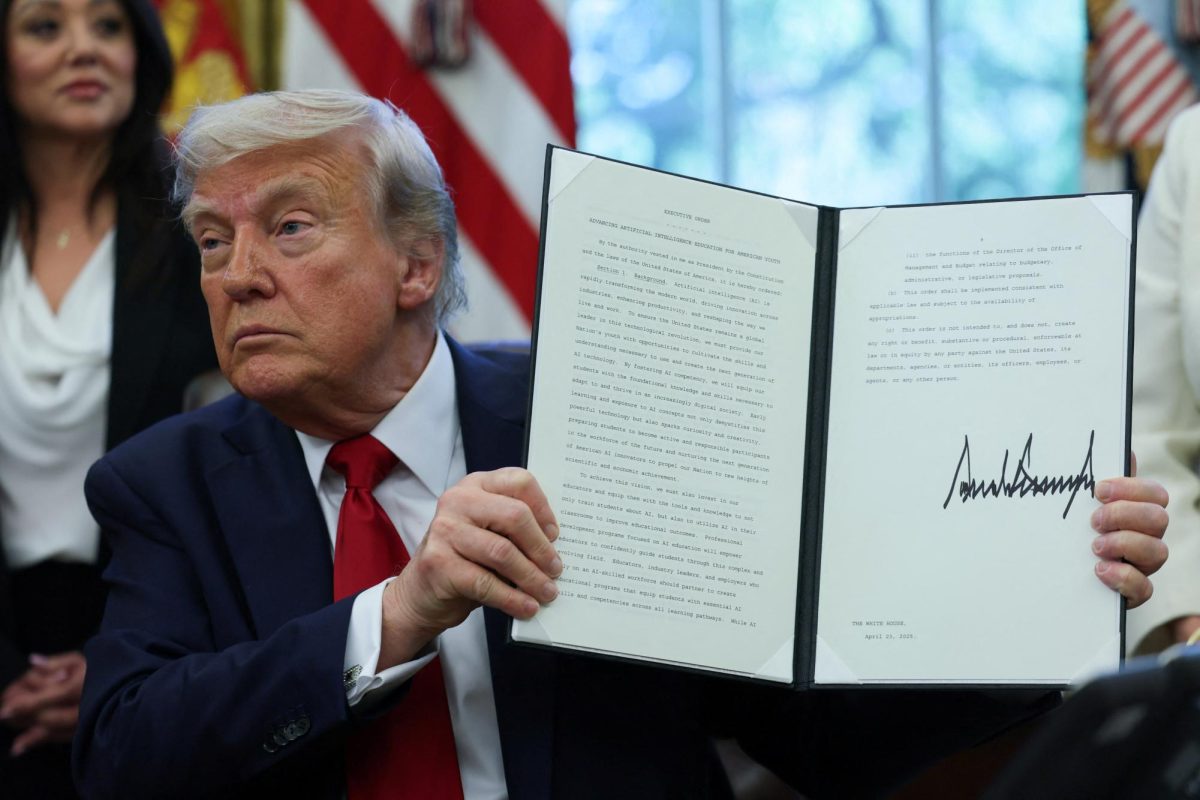“We have free will, and I feel like that’s being taken away from us,” says Ella Bolger (’25). The senior was commenting about Mamaroneck High School’s new cell phone policy.
Fourteen states have introduced policies targeted at reducing cell phone usage in secondary education. Four states have banned usage all together while nine others have enacted a partial ban and/or policy suggestion.
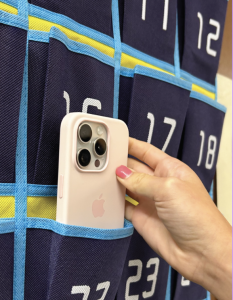
These policies emerged from a study conducted by the European Journal of Educational Research which found that cell phone usage has dramatic implications in the classroom across all age groups. This marks a dramatic shift away from technology in education. While New York is yet to follow suit with an official policy, Governor Kathy Hochul has announced that a ban is in the works.
In response to such policies, Mamaroneck Union Free School District has updated its cell phone policy at both Hommocks Middle School and Mamaroneck High School.
The concept of updating the district’s smart phone policy came in the Spring of 2022 with the establishment of a committee composed of administrators, teachers, parents and students.
According to MHS Principal Lina Carolini-Cannavo, the committee “looked at the pros and cons” of a variety of cell phone policies and settled upon “pouches attached to desks” that students were to place their phone in at the start of every instructional period.
Ultimately, logistical obstacles prevented the implementation of such a policy. Following his arrival in November of 2023, Superintendent Dr. Charles Sampson recognized minimizing smartphone usage as a priority in the district after “talking to a ton of students, parents, faculty and staff.”
Therefore, Dr. Sampson spent “the summer digesting a lot of feedback…[to create] a sensible approach that’s age appropriate” to students across both the middle and high school.
Ultimately, he decided that the use of service-blocking cell phone bags–nicknamed ‘Tiger Pouches’–best fit the middle school environment.
When deciding what policy to implement at the high school, Sampson decided to “appeal to the sensibilities” of “mature” MHS students by not prohibiting cell phones altogether but encouraging students to put their phones not only in their bags, but out of reach, during instructional time through the use of phone caddies which teachers are encouraged to enforce.
Tenth grade Global History and AP European History teacher, Peter Greene, has taken a different approach to the new policy.
While teachers have some flexibility in how they use their caddies, most teachers require their students to place their phones in an assigned pocket at the start of the class period.
Eleventh grade US History teacher Erin Kennedy reports that since the implementation of the policy she “has seen very few cell phones out in [her] classroom…which is amazing and awesome [as my students] are more engaged and ready for class.”
Kennedy notes that in the past “students would [continuously have] their cell phones out” and despite “trying to be discreet” were often distracted from the lesson.
“I think it’s unrealistic of adults to ask teenagers to not be addicted to their phone when every single adult has their phone out all the time,” Greene comments.
So, in an effort to discourage students from refraining from their phones without use of the caddie, Greene is continuing to enforce the policy he has practiced since the rise of the smartphone.
When Greene sees a phone out, he repeatedly screams “phone!” until a student puts their device away. From his observations, this method of humorist antics has been quite effective as students find “nothing to argue about,” and are motivated to keep their phone off and away in fear of embarrassment.
Greene intends to use the caddie as a method to reinforce his zero-tolerance stance on cell phones. If he notices that cell phone usage is a continuous issue with a particular student or class, he will begin to utilize the caddie on a regular basis.
Others share Greene’s sentiment that students need to be given the opportunity to learn how to regulate their screen time in the classroom.
“I think the phone policy is stupid because we are going to college next year and we will have our phone in our classes,” says Ella Ward (’25).
Despite these hesitations, Principal Cannavo believes Mamaroneck will greatly benefit from the enactment of these new regulations.
Before the widespread use of cell phones “students seemed more engaged…and less fearful,” Cannavo notes. Vulnerable discussions rarely left the classroom. Students were more willing to participate and form connections with their classmates.
This sense of camaraderie dwindled during the pandemic as socialization was deemed trivial in comparison to the global health and safety crisis.
Throughout the past three years school has approached its former state and interpersonal connections amongst students have also reemerged–at least to some extent. Still, Cannavo noticed students were more reluctant to share out loud, “hiding in their computers or on a Google Doc.”
In the past month–since the resumption of school–Cannavo has noticed “instrumental changes” in the classroom environment.
“It’s been amazing, there’s been slip ups…and there’s been hurdles..but there is a noticeable difference,” she notes.
Educators and administrators will continue to examine the effectiveness of the policy through the school year, potentially pivoting and taking feedback from stakeholders. In the meantime, MHS students will continue to adjust.




